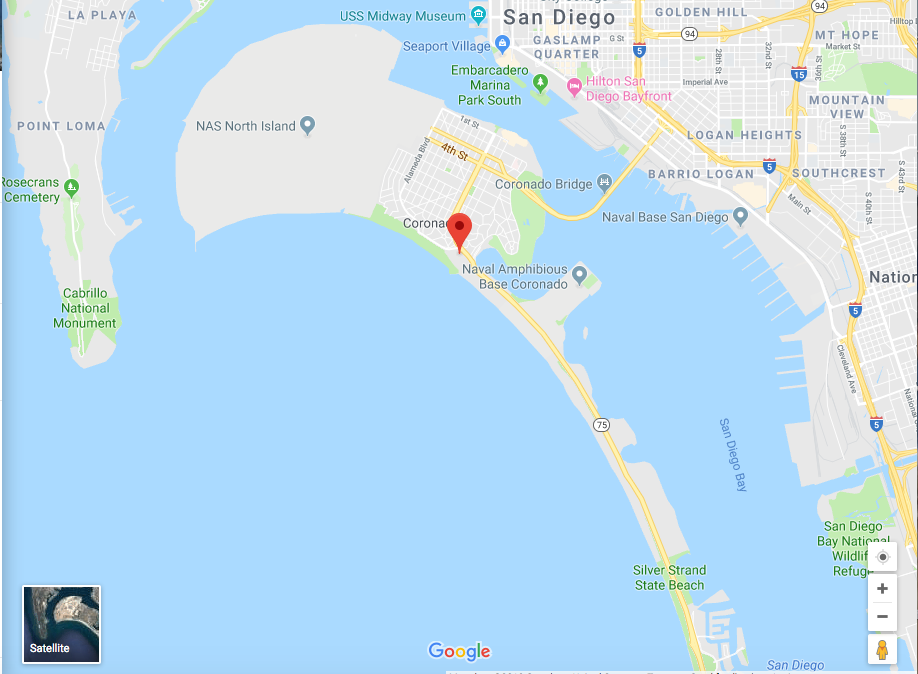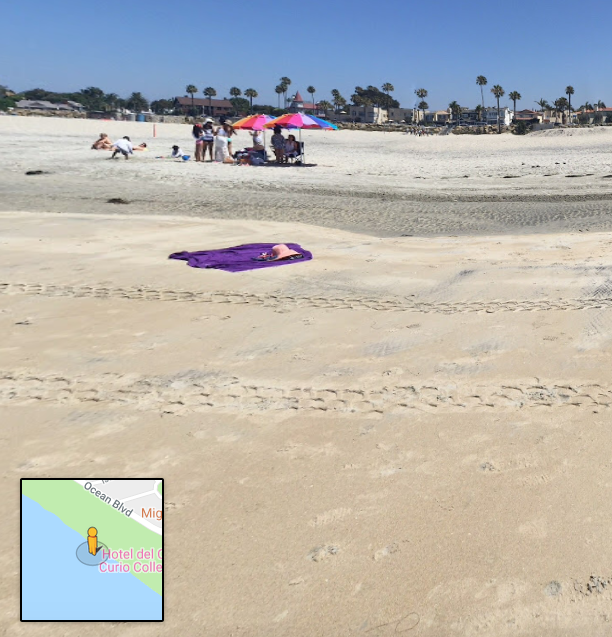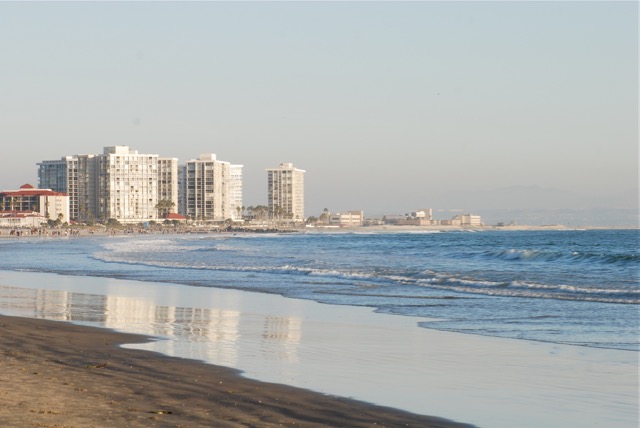Having a concrete setting in your novel helps orient the reader and can be used to establish the tone, but how do you go about writing realistic settings if your main character travels the world — while you stay at home — or lives in a place far from where you reside?
The answer is research. I’ve made a list of 7 internet tools that can be used to build accurate, realistic settings for novels. To help explore the potential of each tool, let’s run through an example of a novel set on Coronado Island, California, USA.
Tools for Writing Realistic Settings:
1. Google Earth
Google Earth has different versions. You can download a version onto your desktop computer, an app to your Android device, or use it on the web via Google’s Chrome browser (the web-based version doesn’t currently work in other browsers).
Google Earth gives you three dimensional maps that can be an airplane view or a bird’s eye view of a particular location. Many maps are supplemented with videos, guided tours, etc.
Google Earth is particularly helpful for giving you the overall lay of the land, so you know where to stage a romantic picnic for your characters. Or hide a body, if it is a mystery novel.
2. Google Maps
Chances are you’ve used Google Maps to find directions to a restaurant or shoe store or your friend’s house. But have you used all its features for writing realistic settings?

(Screenshot used for educational/discussion purposes).
When you first type in a name or address, you will get this map view. See the satellite view in the lower left corner? Click on that for an overall view. Also, see the little yellow guy on the bottom right corner? You can use your mouse to drag him into the map for a street view of a particular location.

I plopped him right on the beach, as you can see in the window on the bottom left hand corner. You can move around at street level and see detailed landmarks. Get an accurate idea of vegetation, architecture, and more. It’s a blast!
Once you have the general details, you may want to return to the map for specific scenes. You can even calculate how long it would take your character to drive from place to place.
3. Wolfram Alpha for Weather
According to Google Maps, that above image was taken in July, 2016. What if you want to set your story in January 1968? What weather would your characters experience?
Luckily, you can look up historical and current weather information for a given location at Wolfram Alpha. According to my search, it was clear and sunny like this 30% of the time in January in 1968 and the average high was 68° F. It also reveals which days were cloudy, which were foggy, and what the percentages were.
4. SunCalc.Org
Want to send your characters out to have a picnic at sunrise? You can find out what time that would be on a given day and place, where the sun would be in the sky, etc.
5. YouTube Videos
As a writer, you know to add sensory information to make a place more vivid. YouTube videos can help you add both images and sounds to your descriptions.
Although I found videos from Coronado with traffic noise and dogs panting, this would be good for a sunrise at the beach scene.
Don’t forget to include the cultural setting as well as the physical one. Do the locals have an dialect or accent? Do they celebrate certain holidays? YouTube can help with those, too.
In My Defens has compiled a wonderful list of videos that feature ambient sounds from different settings that are perfect to listen to while writing. I often use them to drown out background noise.
6. Snap map
This is a pretty new app that allows you to see brief Snapchat videos that anonymous users have posted at a given location. It is oddly addicting and also an fantastic source of ideas and inspiration.
Add a location to the search box. Once the map comes up, click on the colored areas that indicate hot spots. Even if there aren’t any, sometimes clicking on a location of interest will yield a video or two. When I checked Coronado Island, I found a young woman’s selfie video taken at the beach hours before. You could hear the waves and wind. Her looks, clothing, and what she said were great clues to cultural setting.
Try a few locations and times to get a good idea of Snap Map‘s full potential.
7. Wikipedia
Be sure to utilize the awesome power of Wikipedia, especially since articles are often edited by people with ties to a given location. In addition to information about geography and history of a given place (for example, Coronado), it also offers lists like regional cuisine in the US, regional dialects (check different languages), etc. The links to references can be invaluable, too.
Miscellaneous:
Of course, travel blogs and social media can also help fill in details of a particular setting. Just keep in mind travel blogs which used to be someone’s clunky personal diary of a trip, now may be highly-curated articles and images sponsored by (paid for by) local tourist attractions. If you do manage to find an authentic one, don’t be afraid to ask the blogger or poster questions about local flavor.
With a good sense of place in your mind through careful research, you can cherry-pick specific experiences and details to create a concrete, powerful setting unique to your novel.
What tools did you try? Do you use any others? We’d love to hear about them.





This is a great resource; thanks for pulling this information together! A section of my current project is set in Athens, Greece, a place I’ve only been to once, so I’ll be using all your suggestions. I’m also going to check out that weather site for a personal reason: I vividly remember a thunderstorm my second night in Phoenix that seemed like a harbinger of doom, and hope to use that marker to figure out the exact date we arrived here in October 1975.
I’ve found some really helpful resources at the library. Travel guidebooks have good maps, pictures, and commentary, and some like Lonely Planet also suggest further reading – novels set in a place, history books, etc. I think all those travel guide companies put that info on the Internet now, too. I like travel essays too, for the flavor of a place. Of course the amount of info available in those sources depends on the place, with more for places that appeal to travelers.
Travel books are good, too. Good luck finding the date of your arrival with Wolfram Alpha.
Those are some very useful tools, and not just for writing, but for planning trips. Thanks!
Good Point!